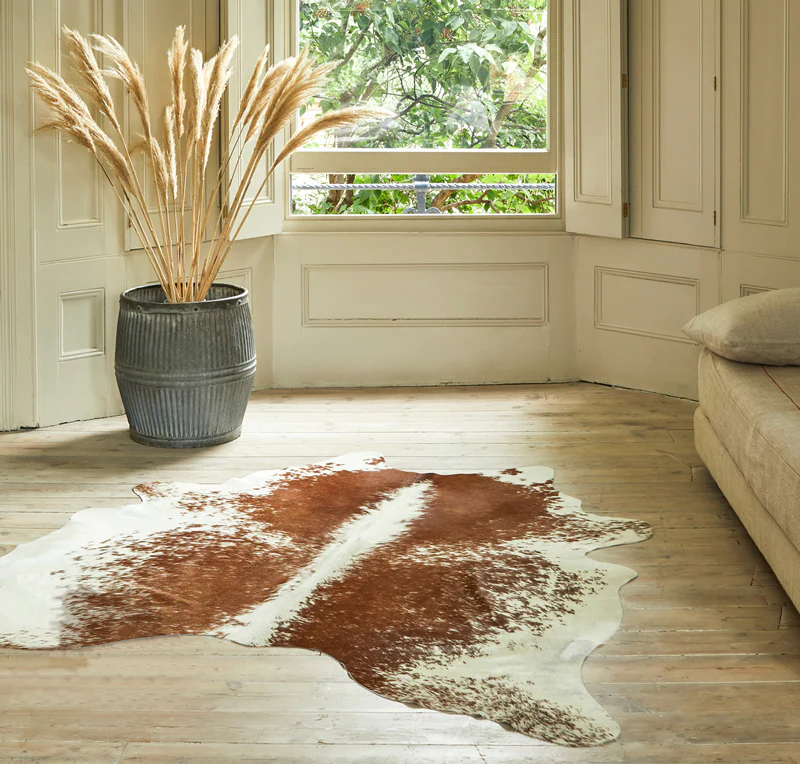Table of Contents
When it comes to interior decor, British made cowhide rugs from Hyde and Hare have long been appreciated for their natural beauty and durability. However, in recent years, there has been a growing concern about their impact on the environment. Many people wonder whether these exquisite rugs are a sustainable choice. In this blog post, we will delve into the sustainable side of cowhide rugs, and explore the factors that can help you make an environmentally responsible decision.
The Beauty of Cowhide Rugs
Before we dive into the sustainability aspect, let’s take a moment to appreciate the aesthetic appeal of cowhide rugs. These rugs are known for their unique patterns and textures, which can add a touch of rustic elegance to any room. They come in various colors and can easily complement a wide range of interior design styles.
The Source of Cowhide
One of the primary concerns when it comes to the sustainability of cowhide rugs is the source of the hides. Traditionally, cowhide rugs were made from cattle raised for their meat and leather. In this context, using the hides for rugs can be seen as a way to make efficient use of all parts of the animal, reducing waste.
Ethical Sourcing
To ensure the sustainability of cowhide rugs, it is crucial to source them from ethical suppliers. Look for rugs made from hides obtained from responsible farming practices. Ethical sourcing means that the cattle are raised in humane conditions, with access to open spaces and proper care. Supporting ethical suppliers not only promotes animal welfare but also encourages sustainable farming practices.
Byproduct of the Meat Industry
Many cowhide rugs on the market today are a byproduct of the meat industry. This means that the hides used for these rugs come from cattle that were raised for their meat, and the hide is a secondary product. By choosing cowhide rugs made from these byproducts, you are contributing to the efficient use of resources and reducing waste.
Natural Durability
Cowhide rugs are renowned for their durability. They can withstand heavy foot traffic and are resistant to stains and wear. This durability contributes to their sustainability because it means they have a longer lifespan than many other types of rugs. A well-maintained cowhide rug can last for decades, reducing the need for frequent replacements and, in turn, reducing the environmental impact.
Low Maintenance
Another sustainable aspect of cowhide rugs is their low maintenance requirements. Unlike some other types of rugs that require frequent cleaning and specialized care, cowhide rugs are relatively easy to maintain. Regular vacuuming and occasional spot cleaning are usually all that’s needed to keep them looking their best. This simplicity in care further reduces the resources and chemicals required for rug maintenance.
Biodegradability
When the time finally comes to retire your cowhide rug, you can rest easy knowing that it is a biodegradable product. Unlike synthetic rugs made from petrochemical-based materials, cowhide rugs will naturally break down over time without harming the environment. This biodegradability ensures that the rug won’t end up in a landfill, further contributing to its eco-friendliness.
Conclusion
In conclusion, cowhide rugs can indeed be a sustainable choice for interior decor when sourced and used responsibly. By opting for rugs made from ethical sources and byproducts of the meat industry, you can support sustainable practices and reduce waste. Their natural durability, low maintenance requirements, and biodegradability make cowhide rugs a practical and environmentally friendly addition to your home. So, if you’re looking to add a touch of natural beauty to your space while keeping an eco-conscious mindset, consider exploring the sustainable side of cowhide rugs.





